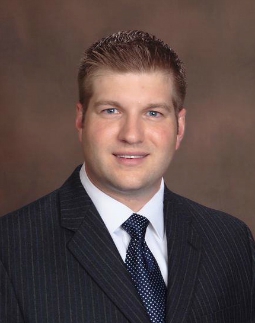So, you’ve tried resting, changing your footwear, and maybe even stretching – but your heel pain is still very much a part of your life. At this point, you may have cut back on your exercise routine, or even stopped it altogether – yet your heels are still complaining.
Does this mean you will have to live in pain for the rest of your life?
Absolutely not!
Though heel pain is one of the most common foot problems out there, once you find the right treatment, getting rid of this type of discomfort can be easier than you might think.
Of course, the first step to finding the solution is to zero in on what is actually causing the problem. Wearing the right pair of shoes and stretching daily are usually great ways to prevent heel pain, but depending on your specific situation, these at-home remedies may not be able to address the root cause of your discomfort.
In fact, 10 to 15 percent of patients will still experience heel pain despite these conservative attempts, and often they will resort to surgery to finally find the relief they need. However, sometimes surgical procedures may have limited effectiveness and will always come with a significant potential for complications, including infection or even worsening pain.
Before you start considering “going under the knife,” though, we have some good news for you:
Platelet-rich plasma (PRP) therapy has helped many patients recover from chronic heel pain and return to their favorite activities!

But What Is PRP Therapy?
PRP therapy is a unique, cutting-edge approach for patients suffering from chronic heel pain.
Blood plasma used during this treatment is rich in platelets. These platelets not only help with blood clotting but also contain proteins known as growth factors, which encourage tissue regrowth and help in the body’s healing processes. So, in simple terms, PRP therapy intensifies and accelerates the body’s natural ability to heal.
What do Treatment Sessions Entail?
First, we will take a small amount of blood from your arm and place the sample on a centrifuge for about 15 minutes to isolate the plasma and concentrate it. This special preparation is then injected (after local anesthesia) into the injured area.
That’s it! From there, natural healing will start to occur over the next 6-8 weeks. Even better, there is no need for recovery or rehabilitation. You can walk right out the door once your treatment session is done. Sometimes just one treatment is enough to benefit patients (though, in other cases, several injections may be required), and lasting pain relief and healing occur in well over 90 percent of patients.
Common Heel Pain Conditions Treated with PRP Therapy
Now, PRP therapy can be used as a form of treatment for many other foot and ankle conditions; not just those that cause heel pain. From ankle sprains to arthritis, many patients can benefit from this treatment.
But for those of you experiencing chronic heel pain, here are some of the most common related conditions we treat at our office with PRP therapy:
Plantar Fasciitis
The most common culprit for chronic pain of the heel in adults. In fact, 1 in every 10 adults will experience plantar fasciitis in their lifetime.
This condition happens when the thick band of connective tissue – the plantar fascia – that runs along the bottom of the foot becomes inflamed or torn. The end result is pain in the heel. Some patients with plantar fasciitis may describe the symptoms as having a sudden onset, while others report chronic difficulties with symptoms that have worsened over time. Typically, pain is worse upon standing after long periods of rest – like when rising out of bed in the morning.
PRP therapy works to undo this damage and help the body retain and increase its natural healing properties. Often, PRP is just what patients need to get over the “hump” that has been keeping them from fully recovering from plantar fasciitis.

Achilles Tendinitis
Another injury that is shown to improve through PRP therapy, Achilles tendinitis is a condition resulting from small tears that develop in the tendon that runs along the back of the heel, connecting the calf muscles to the heel bone.
This condition typically occurs in runners who have suddenly increased activity levels without proper conditioning. Pain in the back of the leg or above the heel is the most common symptom. Discomfort becomes worse during or after physical activity – especially prolonged running and sprinting.
PRP therapy has shown to reduce pain in 80 percent of Achilles tendinitis patients, as well as restore function and increase mobility in most of these patients as well, by accelerating the body’s natural healing processes.
Visit Our Office for PRP Therapy
There is definitely hope for patients suffering from persistent, chronic heel pain. And though many will get better with standard conservative therapies, others may have a hard time fully recovering from their condition.
If that is the case for you, PRP therapy may be just what you need to finally get the relief you have been looking for. PRP therapy delivers proven effectiveness, presents extremely low risks, and is a great alternative to surgery.
If you are ready to say goodbye to heel pain once and for all, give our office a call at (512) 593-2949 today. You can also take advantage of our online contact form to have one of our staff members reach out to you.


